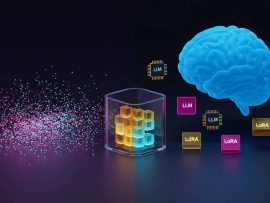
When it comes to artificial intelligence (AI) programs, one of the biggest challenges is understanding how they make decisions. These programs, often referred to as “black boxes,” can provide answers, but they don’t always explain why or how they arrived at those answers. This lack of transparency has been a concern for researchers and users alike.
To address this issue, computer scientists from Aleph Alpha, a Germany-based AI company, have developed an algorithm called AtMan. This algorithm allows large AI systems like ChatGPT, Dall-E, and Midjourney to explain their outputs, making them more transparent and understandable.
AtMan was integrated into Aleph Alpha’s language model, Luminous, in mid-April 2023. Users can now utilize the Luminous playground to interact with the AI and see how it reasons about its output. This tool has significant implications for tasks like summarizing text or completing an input.
Despite its explanatory power, AtMan has some limitations. While it can identify which input words influenced the AI’s output, it cannot explain how the AI acquired certain knowledge during its training. Additionally, it cannot debunk all of the false information generated by AI systems, known as “hallucinations.” However, AtMan still provides enormous advantages by allowing quick verification of AI-generated summaries and ensuring that no additional content is added.
From an ethical standpoint, AtMan’s ability to reveal which personal data led to a particular result is critical. For instance, when an algorithm is used to calculate a person’s creditworthiness, it is essential to check whether discriminatory characteristics have influenced the decision-making process.
One of AtMan’s strengths is its versatility. It can be used not only for language models but also for AI programs that process images. This includes algorithms analyzing medical scans to diagnose various disorders. The ability to understand an AI’s reasoning behind its output can enhance the comprehension of AI-generated diagnoses and help medical professionals identify patterns that may have gone unnoticed.
AI systems are continually evolving, often integrated into products before they are fully understood. This lack of understanding can hinder improvement efforts. AtMan is a crucial step forward in creating more transparent AI systems by shedding light on their decision-making processes.
Understanding how AI systems make decisions is challenging due to their complexity. Neural networks, which are the foundation of AI models, consist of layers of interconnected computing units called neurons. These networks learn from training data to generate meaningful results. However, keeping track of all the parameters in large AI models is impractical.
To make AI results more transparent, two methods have been widely used: backpropagation and the perturbation model. These methods allow us to trace back how the output was generated and identify the input data that influenced the result. However, these methods are not suitable for large AI models like ChatGPT or Dall-E.
AtMan addresses this limitation by manipulating how much attention an AI pays to specific input words. By modifying the input data deeper within the network, AtMan can determine which parts of the input were crucial for the output. It provides a way to control the content that an AI takes into account, making it more transparent and understandable.
Language models like ChatGPT and Luminous use the attention mechanism to process input and generate responses. This mechanism enables the AI to recognize the most important information in the input and understand references between words. AtMan builds upon this mechanism to expose the reasoning process behind an AI’s output.
While AtMan is a significant advance in Explainable AI (XAI), it does not entirely eliminate the issue of hallucinations or false information generated by AI systems. However, it gives users the ability to control the AI’s focus and raises important questions about the reliability of its outputs.
In conclusion, AtMan is a valuable tool for understanding how AI makes decisions. It brings transparency to AI systems that were once considered black boxes. By providing explanations for AI reasoning and allowing users to control the content an AI considers, AtMan offers significant advantages for various applications. As AI systems continue to evolve, tools like AtMan will play a crucial role in making them more transparent and accountable.
FAQs
Q: Can AtMan completely eliminate false information generated by AI systems?
A: No, AtMan cannot debunk all false information generated by AI systems, but it does provide the ability to understand and control the AI’s reasoning process.
Q: How does AtMan work with image-based AI programs?
A: AtMan can be used to analyze the output of AI programs that generate or process images. It helps identify which areas of an image influenced the AI’s description or diagnosis.
Q: Is AtMan limited to language models?
A: No, AtMan can process any kind of data that a transformer model works with, making it versatile for various AI applications.
Q: Can AtMan be used to improve AI models?
A: AtMan’s explanations can potentially help improve AI models by providing insights into their reasoning process. Further research is needed to explore this possibility.
Conclusion
AtMan, the new algorithm developed by Aleph Alpha, offers a breakthrough in understanding how AI systems make decisions. By providing explanations and allowing users to control the AI’s focus on specific input data, AtMan brings transparency to AI models that were once considered black boxes. This tool has significant implications for a range of applications, from verifying AI-generated summaries to ensuring fairness and accountability in decision-making processes. As AI continues to evolve, tools like AtMan are crucial for building trust and understanding in the world of artificial intelligence.








